Everything on model trains, model railroads, model railways, locomotives, model train layouts, scenery, wiring, DCC and more. Enjoy the world's best hobby... model railroading!
Building the Wild West: How Railroads Shaped Frontier Towns and Inspired Model Railroaders
If you’ve ever been captivated by a classic Western… complete with saloon brawls, dusty cattle drives, train robberies, and tense showdowns between outlaws and lawmen… then you already understand the allure of the Wild West. It’s no surprise that so many model railroaders choose this iconic era as the centerpiece of their layouts. There’s something timeless and romantic about the frontier spirit, even though life for early settlers was anything but easy.
Creating a Wild West town on your model railroad layout is a chance to blend history, storytelling, and craftsmanship. It’s about more than just trains… it’s about capturing the grit and charm of a bygone era.
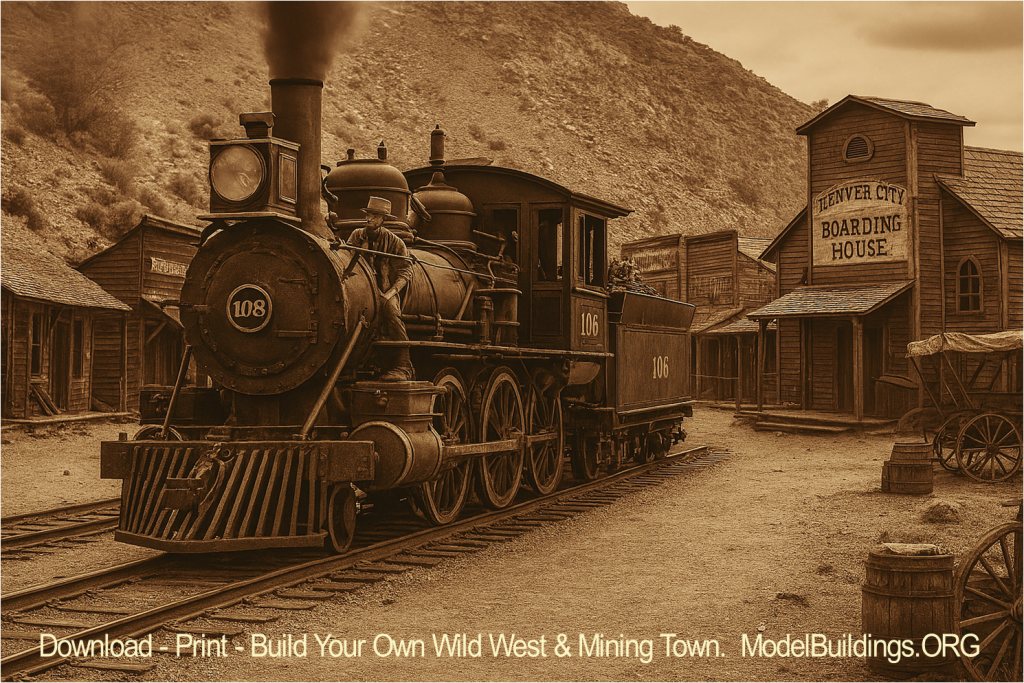
What Makes a Wild West Town Come Alive?
To build an authentic Wild West scene, you’ll want to include the essentials: a saloon (or two), a sheriff’s office and jail, a blacksmith, a general store, a gunsmith, and of course, a bank. These were the lifeblood of any frontier town. Add a hotel or boarding house for weary travelers, and maybe a church or school to round out the community. And yes, more saloons are always welcome… after all, that’s where the action happened (especially for the menfolk).
For added realism, consider placing your town near a mining camp, a ranch, or a railroad station with a telegraph office. These elements help tell the story of expansion, commerce, and survival in the untamed West.
If you’re looking for ready-to-print buildings to bring your layout to life, check out
https://www.modelbuildings.org/wild-west-mining
The downloadable kits are perfect for crafting detailed scenes with period-accurate architecture and signage.
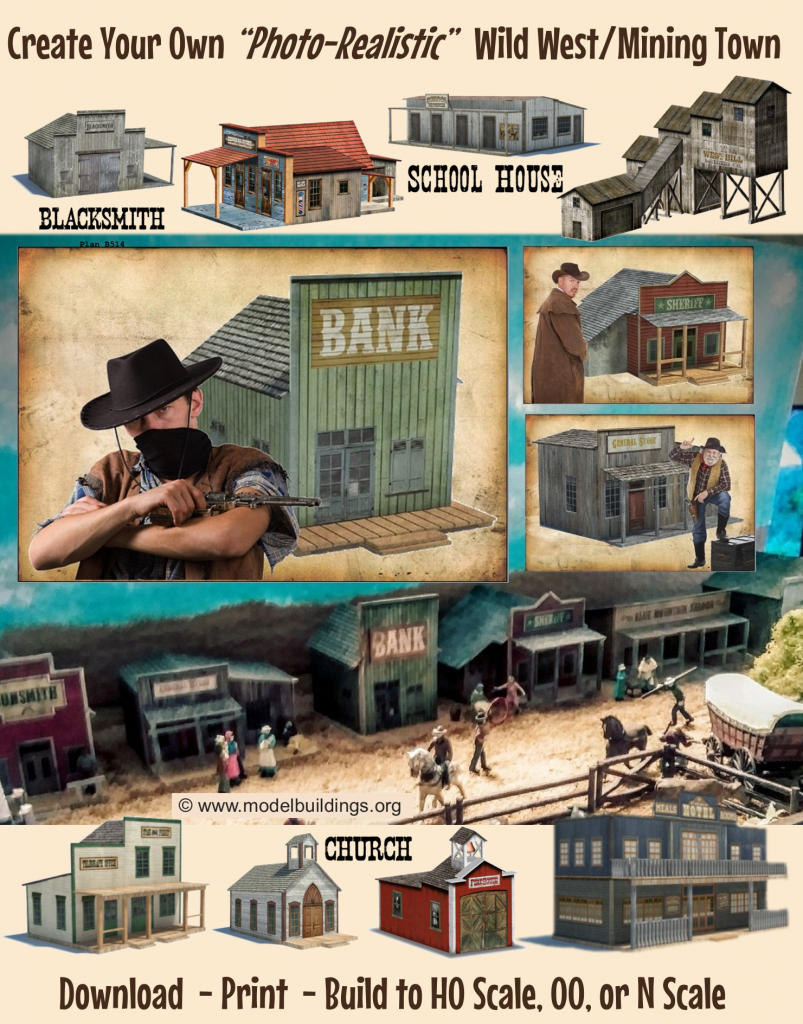
A Brief History of Railroads in America
Railroads first took shape in England, thanks to pioneers like George Stephenson, whose steam engines revolutionized transportation. It wasn’t long before American entrepreneurs saw the potential and began importing both engines and rails from England. Before the Civil War, much of the infrastructure was still sourced overseas.
But once the idea took root, the United States embraced railroads with gusto. The ability to move goods, people, mail, and even gold across vast distances was a game-changer. Compared to slow, dangerous stagecoach journeys, trains offered speed, safety, and efficiency.
Railroads didn’t just connect cities… they transformed the entire country. Economically, socially, and politically, the U.S. was reshaped by steel rails and steam engines. Over the next fifty years, America saw a boom in infrastructure: bridges, tunnels, telegraph lines, and train stations sprang up to support the growing network.
Challenges on the Frontier
Of course, building railroads across rugged terrain wasn’t easy. Financing was a constant hurdle, and opposition came from all sides… stagecoach operators, canal companies, turnpike owners, and even saloon keepers who feared losing business. In some cases, resistance turned violent, with sabotage targeting tracks and equipment.
Despite these challenges, the railroads pressed on. The promise of progress was too strong, and the benefits too great.
Train Robberies: The Wild West in Action
If you’ve seen a Western movie, you’ve probably watched a gang of outlaws rob a train. These scenes weren’t just Hollywood fiction… they were based on real events. As trains replaced stagecoaches, criminals adapted their tactics. Gangs targeted gold shipments, payrolls, and passengers, often striking in remote areas where law enforcement was days away.
Some robbers placed obstacles on the tracks or removed wooden ties to derail trains. Others rode alongside on horseback, leaping aboard while their partners held the reins. Once onboard, they’d unhitch the rail cars, blow open safes with dynamite, and make off with the loot. In some cases, gang members posed as passengers, waiting for the right moment to seize control.
Railroads like Southern Pacific, Union Pacific, and Central Pacific took these threats seriously. Security became a top priority, and companies like Wells Fargo were heavily impacted.
Famous Outlaws of the Rails
The Wild West had no shortage of legendary train robbers. Jesse James and the James Gang were among the most notorious, followed by Butch Cassidy and the Wild Bunch. In one infamous heist, the Wild Bunch used too much dynamite and accidentally blew $30,000 into the air.
Law enforcement agencies like the Texas Rangers, Pinkerton detectives, and U.S. Marshals worked tirelessly to track down and prosecute these criminals. Their efforts helped bring a measure of order to a lawless frontier.
Bringing History to Life on Your Layout
Model railroading offers a unique way to explore this rich history. By recreating Wild West towns and mining camps, you’re not just building scenery… you’re telling stories. Every building, every train, every tiny figure adds to the narrative.
Whether you’re drawn to the drama of train robberies, the charm of dusty saloons, or the ingenuity of early railroads, there’s a place for it on your layout. And with printable downloaded kits from https://www.modelbuildings.org, it’s easier than ever to bring your vision to life.“When steam met steel, the Wild West was never the same.” From dusty trails to iron rails, railroads didn’t just connect towns… they built legends. Explore the range on the website under the category Wild West / Mining.
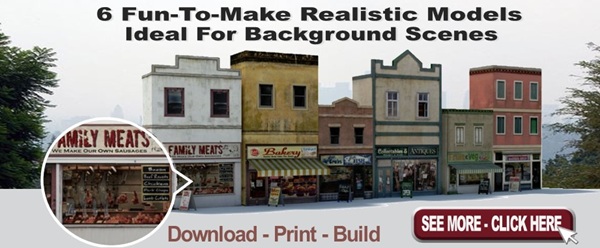






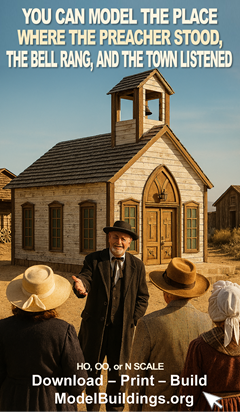
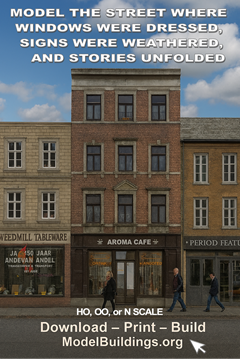
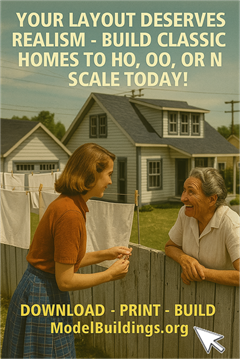
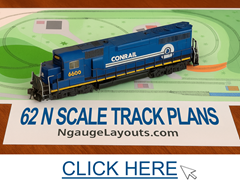
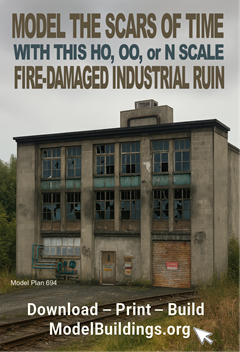
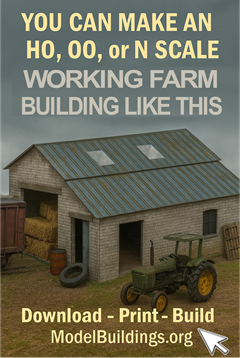
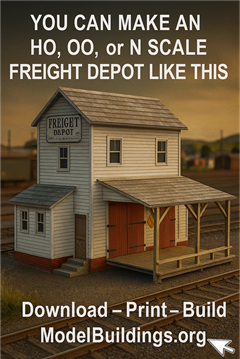
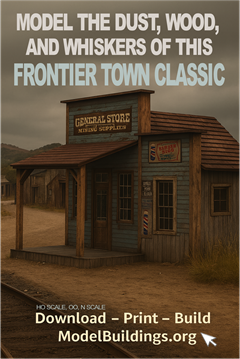
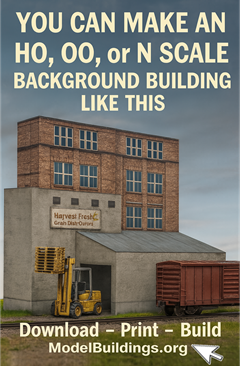
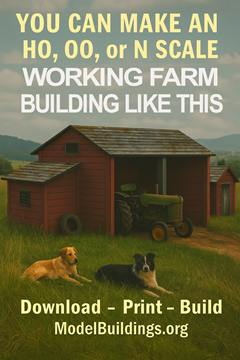

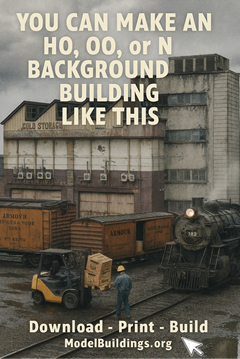
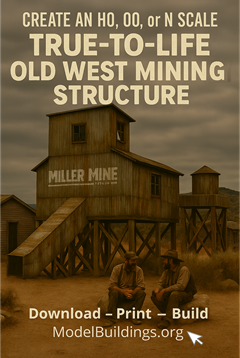
Leave a Reply